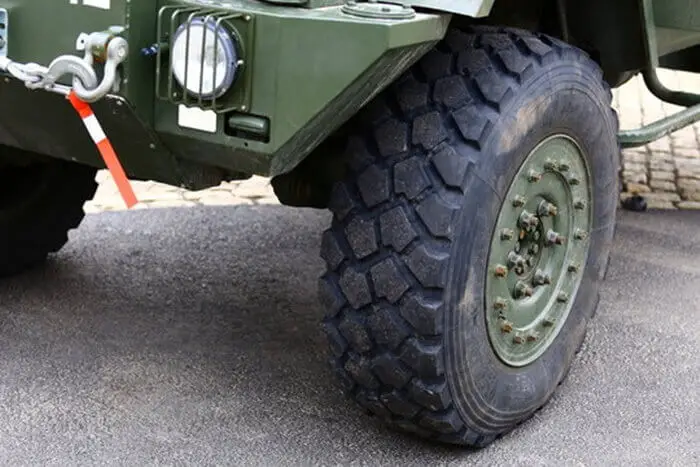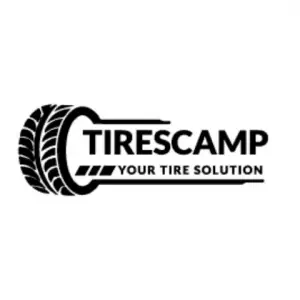Your 2WD tractor’s front steer tires bear the weight of the front axle and create the lateral force needed to steer the tractor on pavement and in soil. Because these tires roll freely, their tread pattern is what creates the power necessary to turn the tractor. To create adequate force, 2WD steer tires often have a deep rib design to grip the paved surfaces or soil.
Knowing the tractor’s typical responsibilities and rib layouts best for those tasks is crucial when selecting front steer tires. This article will walk you through a comparison of the 3-rib and 4-rib tractor tires so that you can easily decide which one is suitable for your tractor.
3 Rib vs. 4 Rib Tractor Tires: What are the Differences
Picking the right front tires for your tractor is critical. So, what are the differences between the 3-rib and 4-rib tires? To understand the differences between the two tires, you first need to know what the term rib means.
A rib is a raised portion of the tread pattern made up of tread blocks.
A 3-rib tire, therefore, is a tire with three tread blocks. These tires are made for tractors that work on paved surfaces and loose soils. When working on paved surfaces, the outer ribs help carry the load, and the vast center rib creates the force required to steer when operating in loose soil. Most 2WD tractors with no front-end loaders are an excellent fit for these tires.
On the other hand, a 4-rib tire is a tire with four tread blocks. These tires are made for front-end loader-equipped tractors that work on both paved surfaces and surfaces with loose soils. When working on paved surfaces, the constant height of the four ribs offers an even load distribution to the hard surfaces, and when working on loose soil, they create the force required to steer. The equal load distribution helps prolong tire life on hard surfaces, primarily when utilized on tractors with front-end loaders. It should be noted that before using a loader, always verify the tire’s load capacity and compare it to the tractor’s front axle load in combination with a full loader bucket and the loader.
To help you understand the differences more, we will compare two tires from Firestone: the Guide Grip 3-Rib Tire and the Guide Grip 4-Rib Tire.
Below is a table summarizing the differences between the two tires:
| Features | Guide Grip 3-Rib | Guide Grip 4-Rib | Difference |
| Width | 8.4 inches | 16.3 inches | -7.9 inches |
| Diameter | 29.2 inches | 41.7 inches | -12.5 inches |
| Construction | Bias | Bias | No difference |
| Tread depth | 19 32nds | 36 32nds | -17 32nds |
| Ply rating | 6 | 8 | -2 |
| Maximum load | 1430 pounds | 3520 pounds | -2090 pounds |
| Inflation | 44 PSI | 32 PSI | 12PSI |
| Rim diameter | 15 inches | 16 inches | -1 inches |
| Tube type | Tubeless | Tubeless | No difference. |
Width
Wider tires offer more grip on the pavement and loose soil than the thin ones. They also wear more evenly, which can cost you less over time. On the other hand, narrower tires are the best option if you are concerned about your tractor’s fuel consumption. They also tend to be much cheaper compared to the wider ones.
Compared to Guide Gri 3-Rib, the Guide Grip 4-Rib are wider by 7.9 inches.
Diameter
A greater diameter leads to increased rolling resistance. This means that your tractor will consume more fuel if you utilize tires with greater diameter.
Compared to Guide Grip 3-Rib, the diameter of Guide Grip 4-Rib is greater by 12.5 inches.
Construction
There are two types of tire construction available in the market. They include radial and bias. Compared to bias tires, radial tires are more durable and popular nowadays.
Both the Guide Grip 3-Rib and Guide Grip 4-Rib feature a bias construction.
Tread Depth
Deeper treads grip better on surfaces as you operate your tractor. Shallow tread grooves make it hard to control your tractor on the loose soil and pavements.
Compared to the Guide Grip 3-Rib, the Guide Grip 4-Rib have deeper treads.
Maximum Load
Maximum load refers to the weight the tires can support at the recommended pressures.
The Guide Grip 3-Rib can manage a maximum load of 1430 pounds at 44 PSI. On the other hand, the Guide Grip 4-Rib can handle a maximum load of 3520 pounds at 32 PSI.

3-Rib vs 4-Rib Tractor Tires: Which One Should You Buy?
Both tires will offer excellent performance when operating your tractor on a mixture of loose soil and paved surfaces.
However, if you have a tractor with front end-loaders, the 3-rib tires will not be a suitable option. In such a case, the 4-rib tractor tires will be your best bet.
What Are the Best Tires for Your Tractor? (Must Watch Video)
Frequently Asked Questions (FAQ)
What are the Purposes of Ribbed Tires?
Ribbed tires are constructed with ribs (deep circumferential grooves) that run similarly to the tire’s roll to reduce the rolling resistance. This improves fuel economy, and the grooves are ideal for uniform tread wear and calmer rides.
What Distinguishes R3 tractor Tires from R4 Tractor Tires?
The tread pattern on an R3 tire is softer than that on an R1 or R4 tire, and the depth of the tread is roughly half that of an R1 tire.
What are Turf Tires?
Turf tires are often lawn tractor or lawn mower tires with a broader footprint in the tread design to reduce disruption to the grass or other delicate surfaces. They offer the greatest traction and buoyancy, making them sturdy on sand or loose surfaces.
What Does SS Indicate on a Tractor Tires?
SS on a tractor tire is used to indicate the maximum speed that the tire can handle.
What is the Price of New Front Tractor Tires?
New front tractor tires will cost you between $100 to $2000. The price is greatly determined by the size of the tires and the benefits they will provide.
Which tire is best for a tractor?
There have an many tires for tractor but R-1 Tires or Agriculture tires best for tractors. it’s good for dirt, mud & fields.
What ply tire is best for a tractor?
For E rating you need 10 ply tires and for F rating 12 ply tires .
Final Take
We hope this article has helped you understand the differences between the 3-rib and 4-rib tractor tires.
If your tractor does not have front end-loaders, either of the options will be suitable. However, the 4-rib tractor tires will be the best option if your tractor has front end-loaders.
